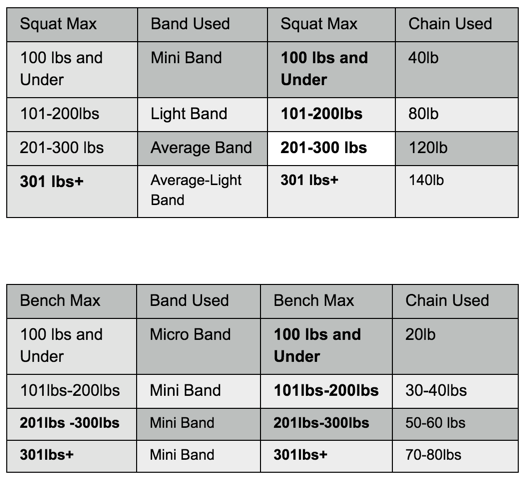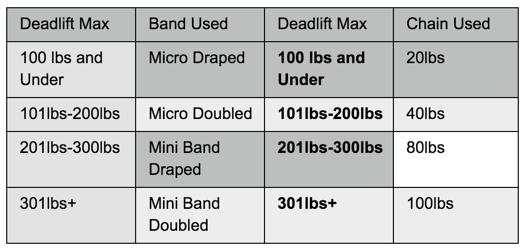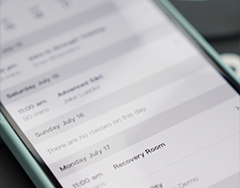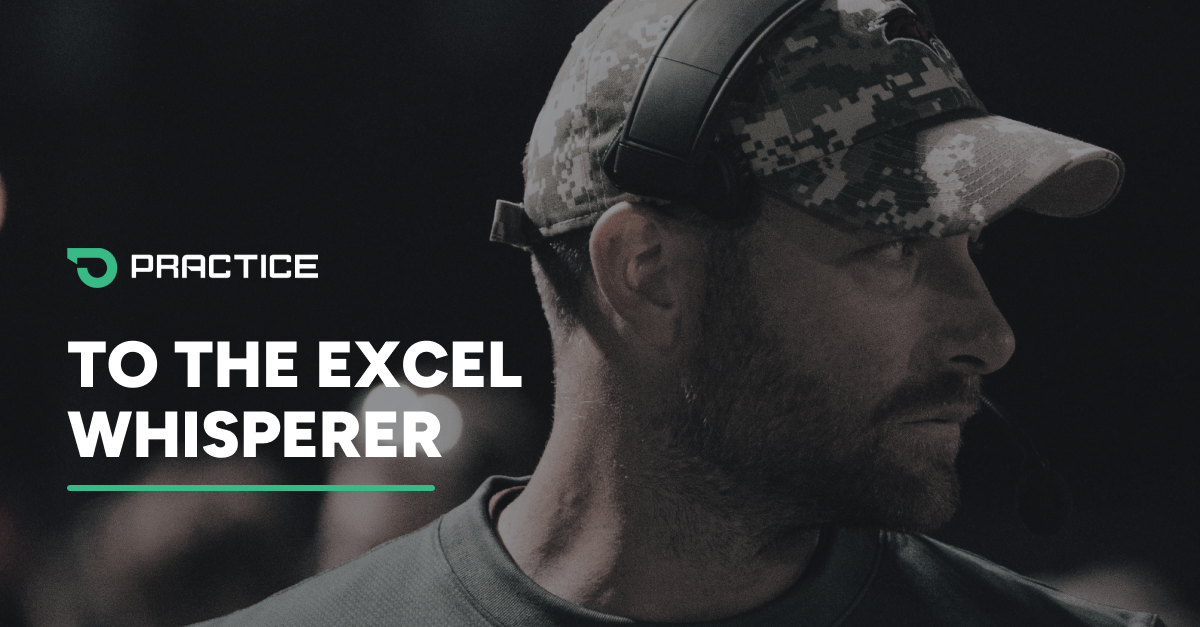Accommodating Resistance: A guide of Why, How and When to Use It
Bands and chains have been used in powerlifting gyms over the last few decades with great success. Over the last decade there have been several coaches implementing their use into a high school and collegiate setting with their athletes.
To many coaches, it seems counter productive to add another variable to an athlete’s training when they do not have a high level of proficiency and strength with their lifts. We will take an in depth look at why a coach would use, how a coach can use them with each of the main lifts, and when the most appropriate times are to add in accommodating resistance with your athletes. I feel it is necessary to credit Louie Simmons of Westside Barbell for bringing this use of bands and chains to a popular forefront. Louie took the time to create the idea of accommodating resistance training and do testing necessary with the athletes in his gym to figure out a lot of the questions that others had wondered when it comes to bands and chains. Let’s look at how you can use these tools whether you have a group of athletes that have never lifted a weight before or if you are trying to build the strongest lifters in the world.
When I began to work with youth athletes, I hated the idea of adding bands and chains with them. Now, we use it with all of our athletes for a magnitude of reasons. Here are a few of the reasons we use accommodating resistance with our youth athletes:
• Teaches Athlete to be Tight - An athlete can’t unpack a squat bar with a band on it and be loose. This gives the athlete a feedback and has been one of the best tools we use for teaching them tightness throughout an entire movement
• Weight Deloads in Bottom - Where do beginner athletes feel most uncomfortable during a lift? In the bottom when they're in the most vulnerable position. This will allow them to feel the weight at the top but still build confidence in the lift
• Teaches Acceleration - This is hands down the best thing we have done to teach our athletes how to be fast through an entire range of motion. With straight weight, the bar will decelerate as the lift is coming to completion, but with accommodating resistance you have to continue to accelerate to finish the lift.
What’s the Difference?
Is there a difference between bands and chains? Absolutely. Both accommodating resistance devices can be great teaching tools, but they do have different benefits.
Bands:
• Accelerate Eccentric portion of the lift- The bands will pull you down faster than just straight weight. A big benefit of this, faster down, faster up.
• Harder on Central Nervous System and Joints if used too many weeks in a row
Chains:
• Feels more like real weight
• Weight does not accelerate on the eccentric
There is one big drawback to both. If they are not set up correctly, the benefit of them greatly decreases. Here a few guidelines for each:
Bands
• Must have tension at bottom of the lift, no slack in band at any point
• Bands ran the same way
• Must be appropriate for the lifter using them-not too much or too little band tension
• Similar tension bands-not one brand new band and one old band
• If in a power rack, set them to the mid foot of the athlete when they are squatting, not in front or behind them. In front they will be forward the whole lift, behind them they will act as assistance like a smith machine
Chains
• Chains don’t hang in the air
• At bottom of lift, 2-3 links should remain on the ground
• Elite FTS Chain Load straps make adjustments for different heights
Now we will talk about how much band or chain to use for each lift with your athletes. Here are some general guidelines that we use for each lift.


These are some general guidelines for using accommodating resistance. This has worked very well for our high school and college athletes. For higher level athletes, you can use a combination of bands and chains. This is very tough for them because as the chain runs out they still have the bands catching. We have had great success with it, but again it is not for beginners.
The Why
We have talked about some of the benefits of accommodating resistance training, but I really feel that people should experiment with it to see the benefits for themselves. For our athletes, nothing has made such a profound difference in their training as bands and chains. It creates speed and strength better than anything we have used and in season it allows our athletes to continue to train heavy but decreases the soreness because they do not have the full bar weight the entire range of motion. Stronger, faster, and fresher athletes has been our experience and we will never look back. We use some form of accommodating resistance every week with main lifts. If you have any questions about accommodating resistance with athletes, feel free to let me know by emailing nick@showtimestrength.com

Subscribe to our blog
Subscribe to receive the latest blog posts to your inbox every week.
Related posts

Why I Chose TeamBuildr OS to Run My Facility

What Are Wellness Questionnaires?
